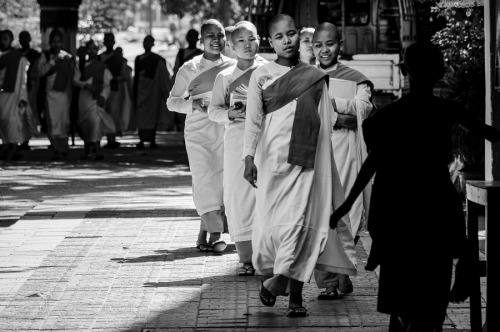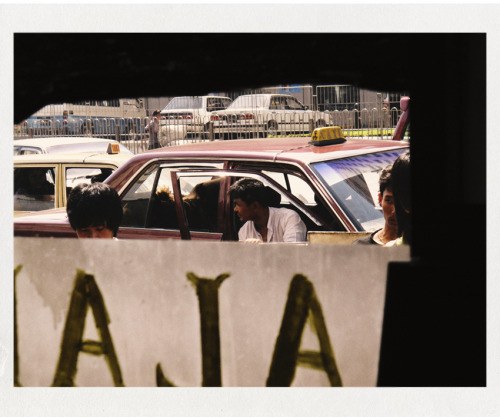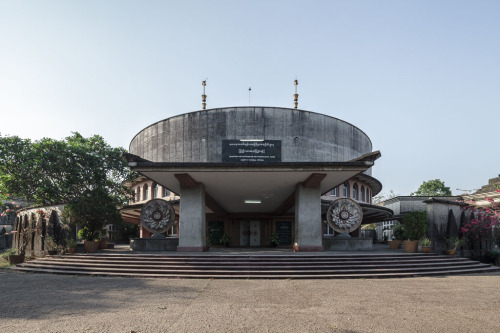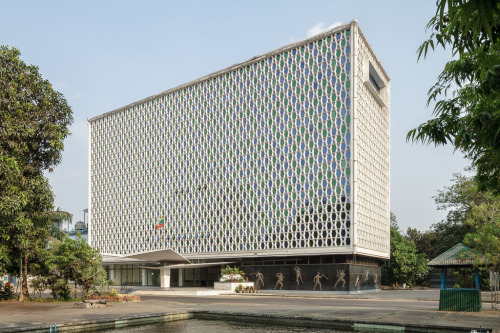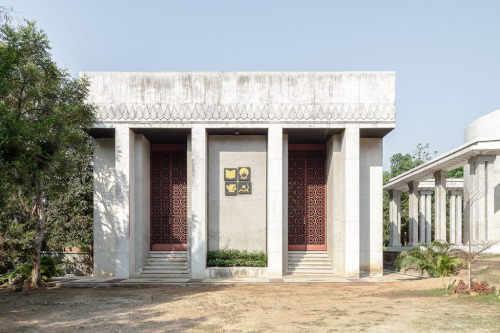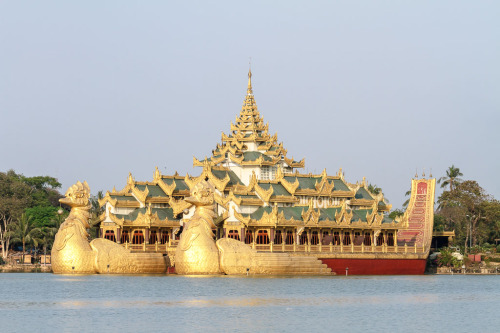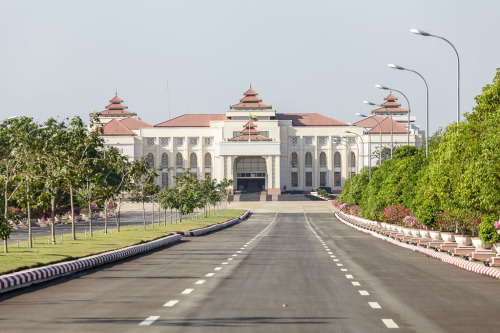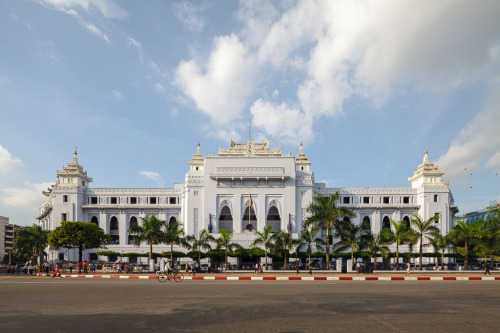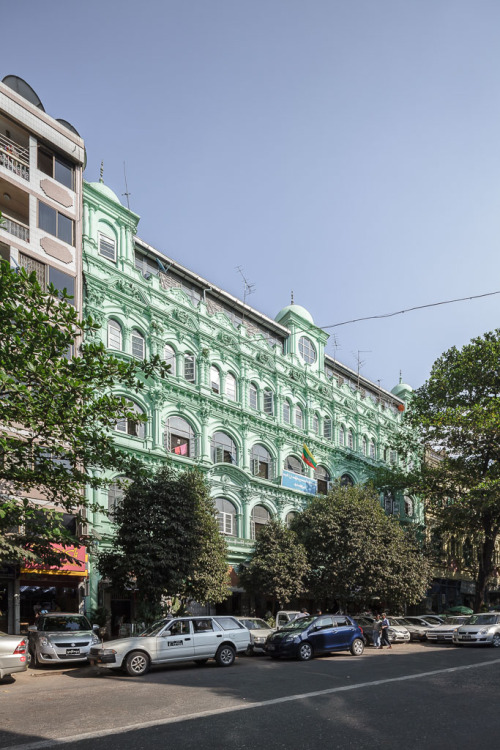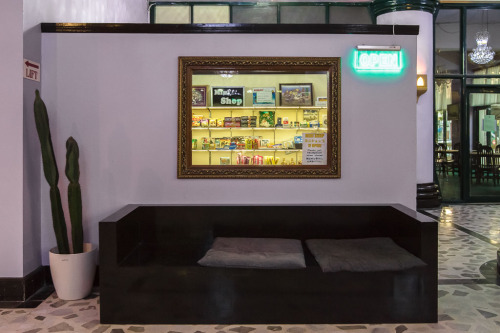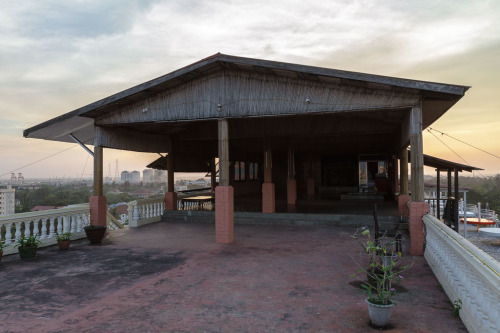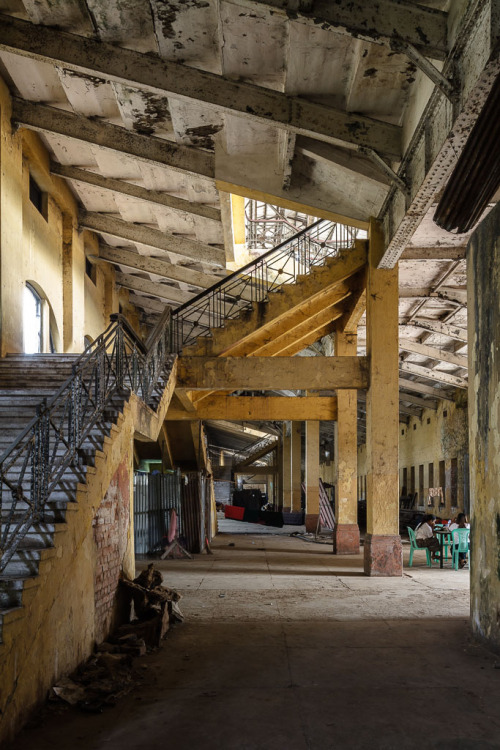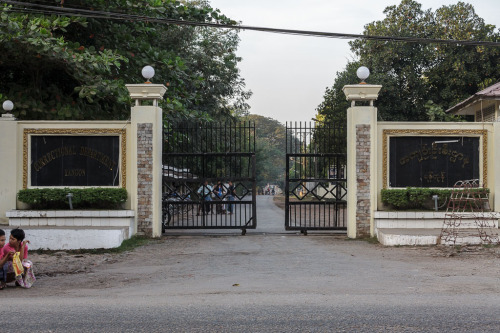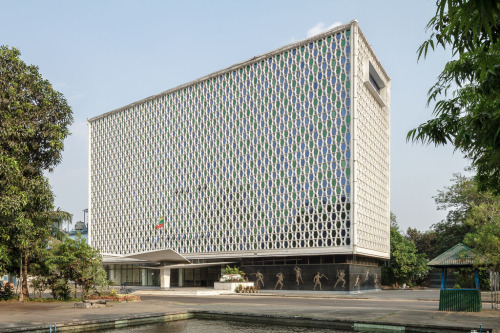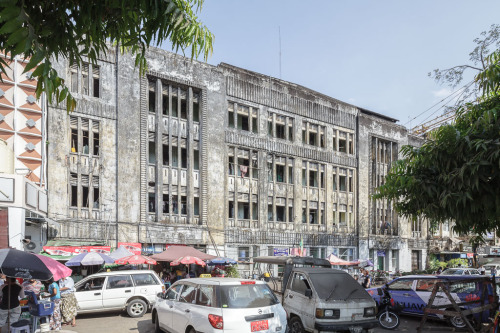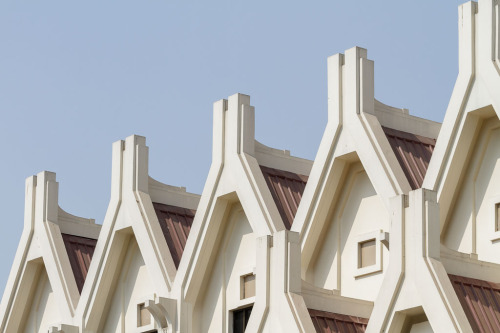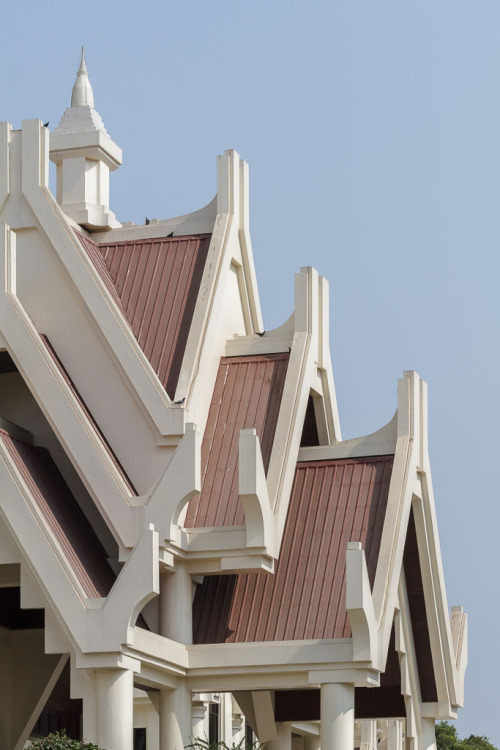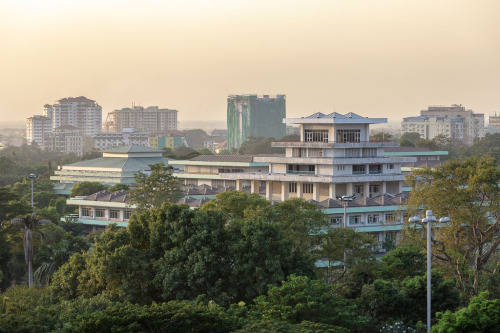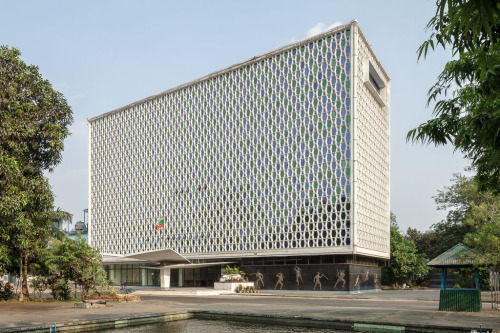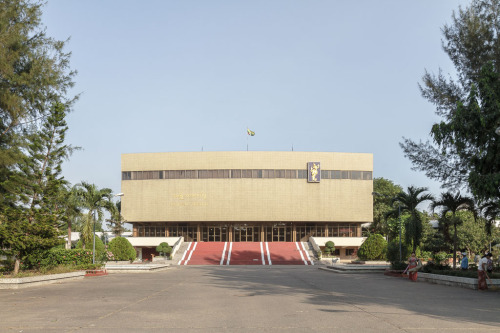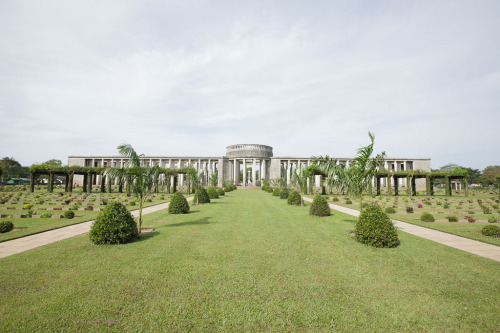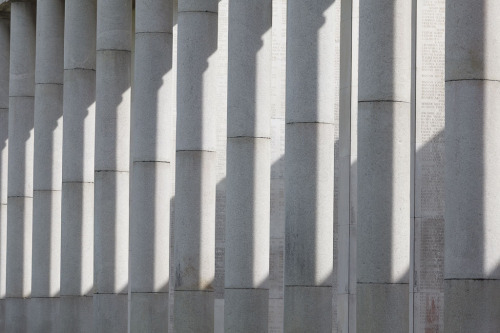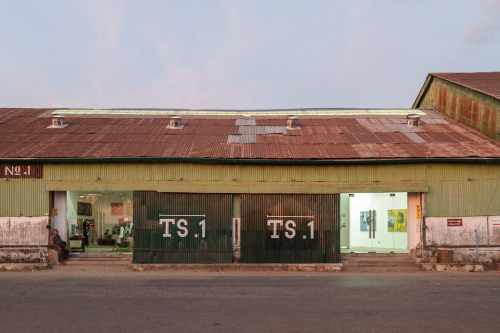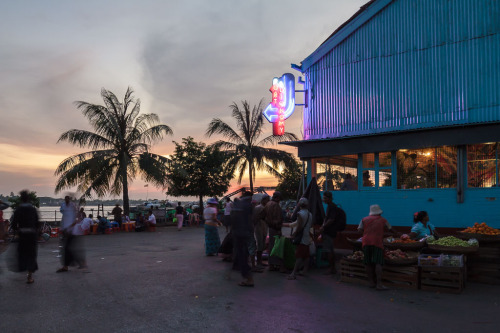Today’s University of Medicine (1) was built in the 1950s as the Engineering College of Rangoon University. The architect was the Brit Raglan Squire, who also designed the Technical High School on Nat Mauk Road. Although this campus is a marvel of post-war modernist architecture, Squire’s main accomplishment was the concave assembly hall built entirely from wood. Much loved by the students, it was torn down during Ne Win’s regime in the late 1970s. Squire’s career took off also thanks to his lauded Yangon commissions. His former firm, RSP, has today become one of the most established architectural practices in Singapore.
#yangon









Yangon, Myanmar (1929)







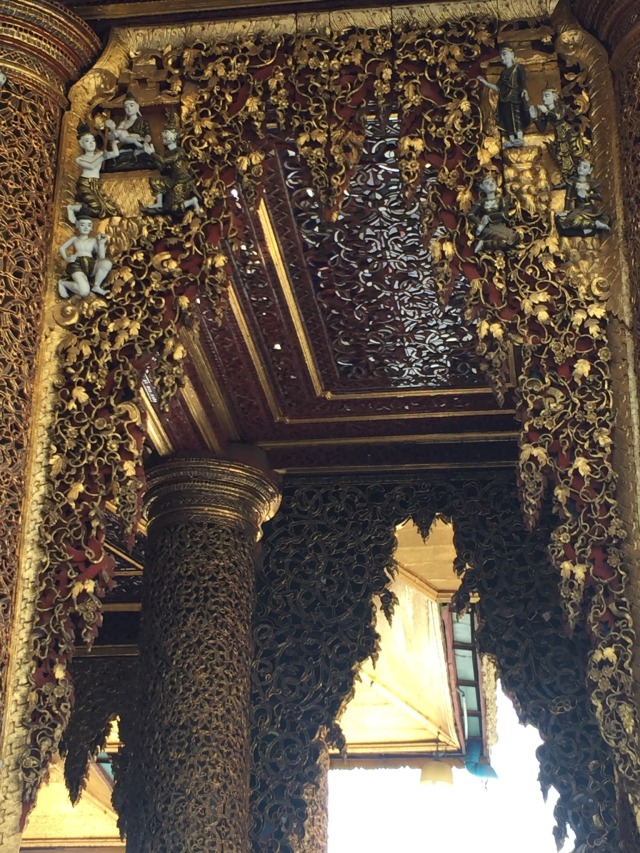


Shwe Dagon Pagoda, Yangon, Myanmar (Burma)
American architect Polk, who ran his architectural practice from New Delhi, was asked to incorporate a number of highly symbolic elements and numbers into the design of this library and Buddhist museum. It was built on the occasion of an important gathering of Buddhist dignitaries that took place in Yangon from 1954-1956. Post-independence prime minister U Nu was a deeply spiritual man, and used Buddhism as an expedient tool for nation building. This building is magical. With its bold architectural design, it conveys the bygone optimism of a young nation. The entire Kaba Aye (World Peace) complex, replete with hollow pagoda, is worthwhile checking out. Be sure to take a peek inside the massive man-made cave!
Post link
The Soviet Union donated several buildings to the fledgling Burmese nation in the late 1950s, including the Inya Lake Hotel, which closely follows the tried and tested Soviet sanatorium (i.e. rest and relaxation resorts) architectural style, except in two major aspects. A giant steamship funnel decorates the roof and creates a playful maritime association. The entrance canopy, much larger than in the hundreds of sanatoria found from St. Petersburg to Vladivostok, is an homage to Burmese climatic realities, since torrential rainfalls inundate the city several months of the year. A cold beverage in the hotel’s garden bar, overlooking peaceful Inya Lake, is a much recommended conclusion to a day of exploring Yangon.
Post link
While this was one of the first major public constructions after Burmese independence, the brief was given to British architect Raglan Squire, who had made a name for himself during the reconstruction of war-damaged London. With this Yangon assignment, a long and fruitful international career kicked off that would see Squire build in the Middle East and Southeast Asia. Almost 60 years old, the Engineering College is strikingly modern and even today, it still exudes the spirit of a newly independent nation that placed a heavy emphasis on the education of its young. Take a walk around and take in the beauty of the wall mosaics.
Post link
A commemoration for an important national poet, this mausoleum is one of the boldest manifestations of modern Burmese architecture. U Kyaw Min used pure and geometric forms; the daring use of deep red and gold in the interior resembles the traditional colour combination of ancient Burmese palaces. The architect stood for parliament as an opposition candidate in the 1990 elections, which were eventually annulled by the military junta. He would spend much of the 1990s in Insein prison, the country’s most notorious jail, contracting liver disease, which would plague him until his death.
Post link
Returning from the 1970 World Exposition in Osaka, General Ne Win was so taken with the Burmese pavilion displayed there that he decreed for a vast replica to be built in Yangon, on Kandawgyi Lake. Today, this swimming restaurant is one of the stranger sights in the city. Its design goes back to the royal barges used by Burmese kings during ceremonial processions in Mandalay, their last capital. The seven-tiered pyatthat roof is typical of traditional architecture. Karaweik Palace is often used for folklore dinners and other cultural shows.
Post link
Looks familiar? Although intended as a clear break from Yangon, the architectural landscape in Myanmar’s new capital Naypyidaw features some interesting copycats. One of them is the new City Hall, which mimics U Tin’s original structure in Yangon.
Post link
This green building on Shwebontha (Mogul) Street houses today’s Basic Education High School (2) Pabedan. We understand this to be the former Randeria High School. From our forthcoming book’s section on Rander House: “Rander House was commissioned by traders who migrated to Burma from Rander, a city close to Surat in the Indian state of Gujarat. As Indian Muslims flocked to Rangoon in the late 19th and early 20th centuries, they coalesced into associations according to their towns of origin. One of these, for example, was the Rander Sunni Bohras Soorti Mohamedan Association. The Soorti-Rander community also maintained a Randeria High School on Mogul Street, which admitted non-Muslims as well. The Surti Sunni Jamah Mosque was this group’s main house of worship.”
Post link
Time for an update now that Yangon Architecture has 7,000 followers on Facebook! Work on the manuscript is in the final stages, and we hope to go into print very soon. Meanwhile, here is a shot of the former Life Insurance Corporation of India Building on Merchant Road. With bilateral relations gaining depth and intensity, the Indian Embassy has voiced an interest in it. We hope to post more photos and short descriptions of buildings we ended up not using for our book.
Post link
We were once asked for interior shots of Yangon International Hotel on Ahlone Road diagonally across from the Yangon Region Parliament. Pictured here are the hotel shop inside the lobby area and hotel’s very own onzen on the rooftop.
Post link
Pictured here is the Kyaikkasan Race Track (built 1926). Racing was a very popular source of entertainment in the colonial days. As a British publication reviewing the colonies’ various delights wrote in 1910: “There is now no lack of racing in Rangoon. The policy of the present executive has been to popularise the sport as much as possible, and extra meetings are held practically every fortnight throughout the year, with the result that (…) racing has never been so popular at the present time.”
Post link
Upon entering the new Yangon Institute of Technology, one student remarked: “On our first day, with renewed hope and vigour, and a feeling of great anticipation, I made my way through the huge, lofty columns of the main entrance. But, I must confess, in all honesty, that I felt a little bit disappointed. The architecture was, if anything, imposing. It was extremely functional, but to me, it was a bit too sterile.“
Post link
Although the government now claims that there are no political prisoners here anymore, Insein Prison still conjures up images of one of the world’s most notorious prisons. Many of the pro-democracy activists were incarcerated here following the 1988 unrest, in inhumane, squalid conditions. The prison was known throughout the world as the ultimate symbol of the Burmese junta’s repression.
Post link
”The Library building I lit from the inside so that all the little coloured glass, coffin-shaped windows sparkled like a Christmas tree. The Assembly Hall was brightly lit inside and we arranged for a gentle flow of lighting outside; the roof looked like the humped back of a giant turtle. The buffet tables each had their own oil lamps, the “pweis” glittered as on the street on my first night [in Rangoon] – and the whole complex was alive with happy, laughing people. The crowds were so great that we held up the traffic for hours on the main Prome [Pyay] Road out of Rangoon. It was a great day and great evening. I went to bed happy – yet with a little tinge of sadness. Could anything quite so magnificent ever happen again for me, personally, in the rest of my life? I have had many great days since but, truly, never one quite like that.” (Raglan Squire on the opening of the Rangoon College of Engineering in 1956, from his autobiography)
Post link
Post link
The Rose Garden Hotel has been running under its soft opening for a while now while construction work is ongoing. The remaining floors and a sizable lobby area are slated to open later this year, although a quick glance at the latter reveals little but structural work being completed as of now. The rooms currently on offer appear more spacious than those of competitors in the same price range. They are tastefully furnished. However, a strange temporary feeling surrounds this hotel, not least because the current entry leads through a tunnel to the makeshift reception area. You have to give it to the developers: they did not build a faceless tower block (of which many are currently under construction in Yangon), but instead opted for an exuberant and interpretative take on Myanmar architecture. Sadly, stone-made pyatthat roofs do not convey much of the lightness inherent in traditional temple designs.
Post link
Post link
The National Theatre is regarded as one of the best-equipped in the Southeast Asian region. In 2014, Berlin-based modern dance troupe Sasha Waltz and Guests had two appearances here, courtesy of the German Goethe-Institut.
Post link
The Taukkyan War Cemetery commemorates Allied soldiers who fell in the Battle of Burma during World War Two. It was begun in 1951 and is the largest war cemetery in Myanmar. There are more than 6,000 graves here as well as the inscribed names of more than 27,000 soldiers whose remains were never found. The grounds are meticulously kept by the Commonwealth War Graves Commission, ironically making them a favourite location for photos, even at times for weddings. The cemetery can be found about 25 kilometres north of Yangon on Pyay Road.
Post link
At the waterfront, by the Wadan Jetty at this southwestern tip of downtown Yangon, one finds both Transit Shed 1 (TS1) and the Port Autonomy bar, both attracting a hip and international crowd. TS1 hosts the Yangon Pop Up Project, an exhibition and retail space designed by Dominic Leong, formerly with Bernard Tschumi and now, alongside his brother Christopher, of Leong Leong, a New York-based design office. In the words of Ivan Pun, the man behind this project, “this project will be used as a demonstration of the possibilities for downtown Yangon’s rejuvenation and an illustration of how a genuine collaboration by people with distinctive skills and voices – be they local or international, artistic or culinary, urbane or unpolished – can be merged to create not just a moment, but a movement to revive this historic neighborhood to its full potential. Its success, in turn, can serve as a seed for Yangon’s next generation of creators and innovators.” In our book, we want to take a closer look at public cultural space in Yangon, and in what form artistic fora can support the ongoing opening of the country. For the time being, how do our readers like the TS1 (and Port Autonomy bar)?
Post link



